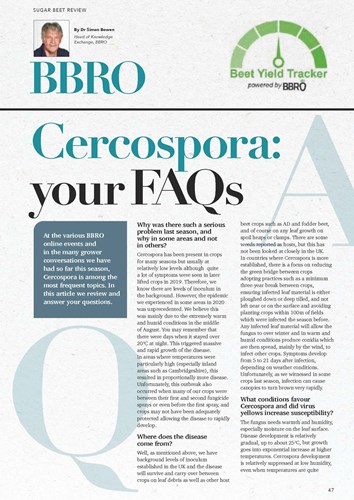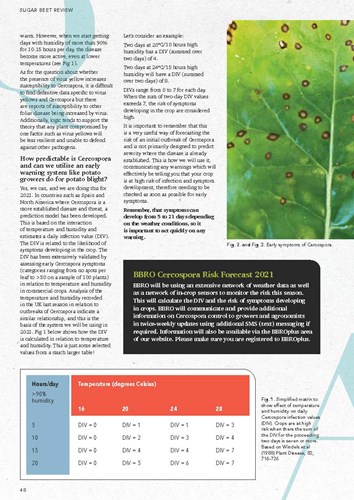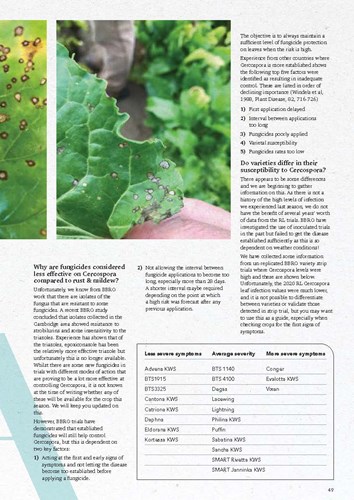CLICK HERE:  CropWatch Spore Monitoring
CropWatch Spore Monitoring
The last Cercospora high risk forecasts were received on the 17th and 18th September, likely due to warm and humid conditions being experienced at that time. These were the first high risk forecasts since 23rd July. No further high risk forecasts were received up until the end of September. Forecasts have now ceased as the risk as we enter October onwards has now passed.
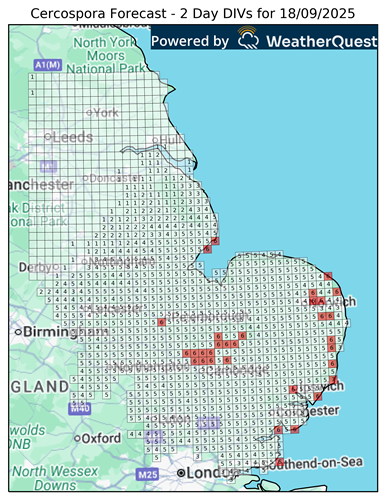
The numbers shown on the maps below indicate the level of risk to the crop of cercospora developing. When an area is deemed at risk the square will turn red, and should act as a prompt for you to check your crop for signs of cercospora. The map below is only an indication of environmental conditions relating to increased disease pressure, it is not an indication of disease presence. Only spray if cercospora is found.
Values below 6 are not of a concern.
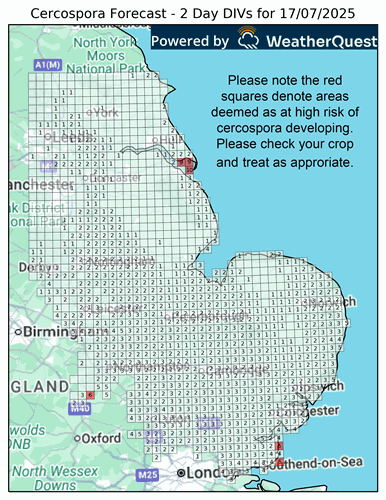
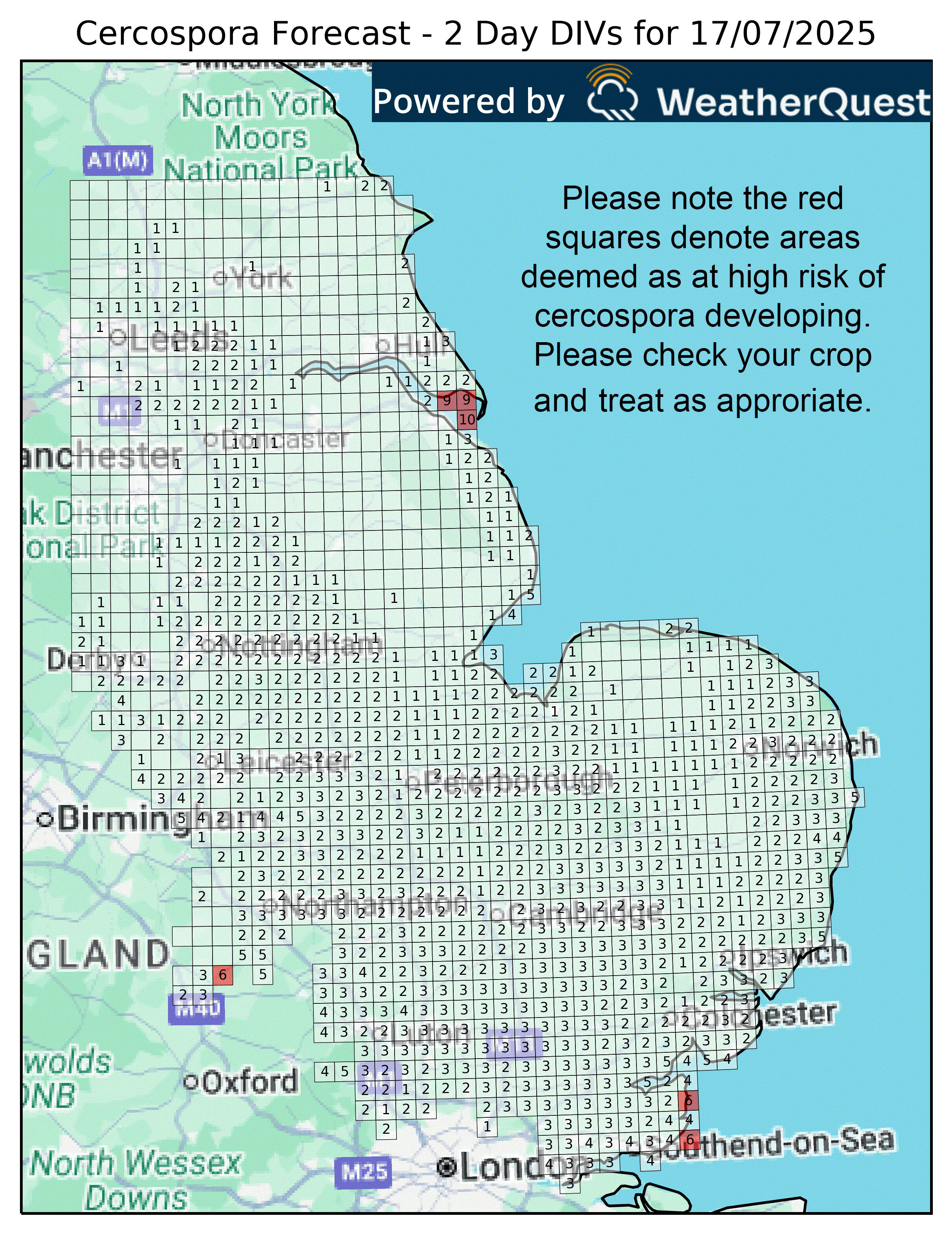
 If maps have not been updated or missed it means they are blank, with no figures depicting any rising risk. Where a high risk (red square) is noted a direct email/text will be issued to those growers in that area.
If maps have not been updated or missed it means they are blank, with no figures depicting any rising risk. Where a high risk (red square) is noted a direct email/text will be issued to those growers in that area.
Cercospora Leaf Spot is a harmful disease of sugar beet. It is paramount to respond to infection early and with effective fungicides. Leaf spots usually develop from 5-21 days after infection. This depends on amount of inoculum, temperature and how wet the leaves have been. Spots typically appear on lower, older leaves first. Droughted, senescing or virus-infected leaves may also show symptoms quicker than healthy actively growing leaves.
BBRO have two systems in operation to help protect your crop and minimise disease incidence: Our CropWatch monitoring & Cercospora Forecast

CropWatch Spore Monitoring
Our CropWatch sites are monitored on a weekly basis for foliar disease. Cartridges in our Spornado air samplers are changed each Monday and sent into the BBRO lab at Norwich. During the week they are then analysed for presence or absence of spores of Cercospora beticola, the fungal pathogen which causes Cercospora Leaf Spot. Each site is also assessed for symptoms of active lesions (which are actively releasing spores)
Use our interactive map to explore our latest findings – Use the tick boxes to select/deselect which data you wish to see.
Also see our weather station data for information on leaf wetness and high temperatures, all factors which drive Cercospora infection.
Forecasting Cercospora
Each day, In partnership with WeatherQuest, we estimate how likely it is that your crops are being infected with Cercospora.
BBRO will monitor levels of risk daily and where clear risk is identified growers will be contacted directly by text. We encourage all growers to be vigilant in their own areas as pockets of rain will add to the humidity pressures
Important: This information provided should be used as a guide and does not replace the need for individual crop monitoring. By law, you can only apply a fungicide to treat Cercospora when first symptoms of infection appear. Early treatment is vital to minimise disease progression and protect yield.
Note: Cercospora is still a relatively new disease to the UK. The model to predict risk is based on data collected from America and Europe. It is not yet known if isolates caught in the UK may react differently in our maritime climate.
If you require any help with identifying Cercospora please contact the BBRO plant clinic
 For more info on the risk of cercospora and how/why BBRO are undertaking this work, please watch this video and read the FAQs below.
For more info on the risk of cercospora and how/why BBRO are undertaking this work, please watch this video and read the FAQs below.
